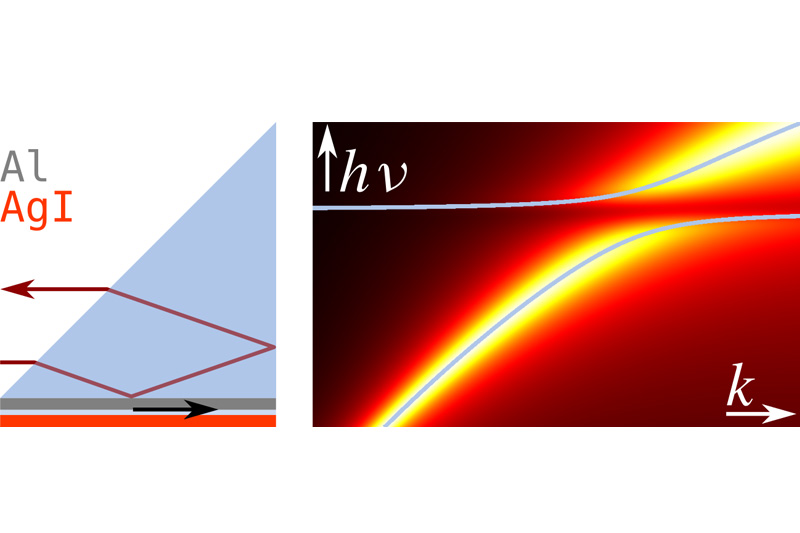Based on the developments of Louis Daguerre and William Henry Fox Talbot, photography spread rapidly in the late 1830s. The basis for this was the light-sensitive material silver iodide. Although photography has developed in other directions in the meantime, silver iodide is still used in our latitudes and in considerable quantities: in the form of condensation nuclei to ward off hail.
But silver iodide is also a promising light-emitting material that can be nanostructured quite easily and whose emission can be efficiently coupled to other nanostructures. Together with the Nanooptics research group, this is exactly what the Iranian physicist Razieh Talebi (Isfahan University) shows in a current publication. In the last few years she has been to Graz twice as a visiting scientist, drawing on her experience with silver iodide from earlier years. Extended by numerical simulations, the experimental results demonstrate strong coupling effects with plasmonic nanostructures made of aluminum. The fact that these effects were achieved for the first time in the blue spectral range opens up new possibilities for nanooptical and sensor applications.
Razieh Talebi, Harald Ditlbacher, Joachim R. Krenn, Andreas Hohenau
Coupling Silver Iodide Emitters to Aluminum Plasmons
J. Phys. Chem. C 125, 2519−2523 (2021)
https://doi.org/10.1021/acs.jpcc.0c09025
